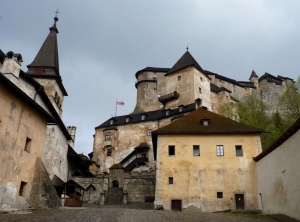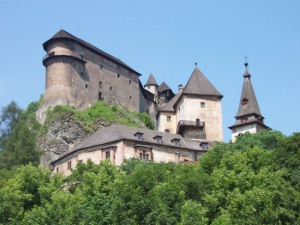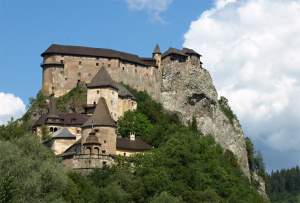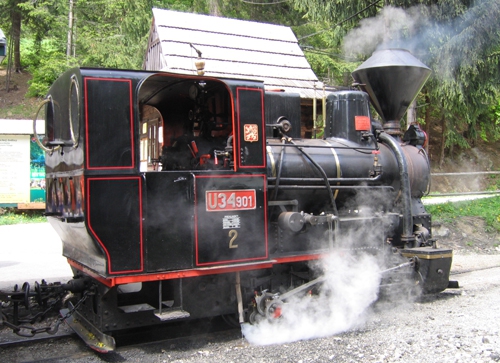Orava castle
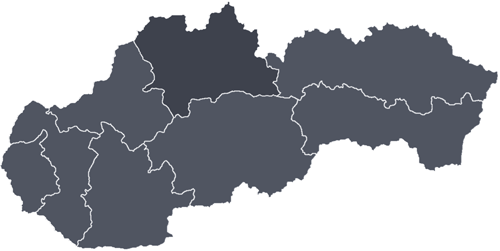
Category: Castles
Region: Žilina Region
District: Dolný Kubín
City / Municipality: Oravský Podzámok
Tourist location: Orava
Mountains:Oravská vrchovina
National cultural Monument
District: Dolný Kubín
City / Municipality: Oravský Podzámok
Tourist location: Orava
Mountains:Oravská vrchovina
National cultural Monument
The castle hill was already inhabited in prehistoric times. The presence of the Slavs in the 9th century is also proven on the today's area of the castle. In the middle of the 13th century, a bricked castle was built probably on the site of a wooden castle. The castle belonged to system of defensive castles of the northern part of the country and also served as a guard function. First mention in writing is from 1267. On the present, there are expositions of the Orava Museum (Oravské múzeum) at the castle.
History of the Orava Castle in short
850 B.C. - 9th century A.D.
The castle hill was already inhabited in prehistoric times - at the time of Hallstatt period (older Iron Age, lasted on the territory of today's Slovakia for period about 850 - 450 years B.C.) and La Tene period (younger Iron Age, on the territory of today's Slovakia it was a period of about 500 - 400 B.C. to about year 1 B.C or years 6-10 A.D.).
13th - 15th centuries
In the middle of the 13th century, a bricked castle was built probably on the site of a wooden castle. The castle belonged to system of defensive castles of the northern part of the country and also served as a guard function. First mention in writing is from 1267, when the castle was acquired by the Hungarian king Belo IV.
For the next 300 years Orava Castle was the royal fortress. The king could not personally take part in the administration of the castle, so he deputed castellan to deputize for him. Several important noblemen changed off in the role of castellans, e.g. Matúš Čák Trenčiansky (1298), Stibor zo Stiboríc (1420), Peter Komorovský (1441) and others.
At the end of the 15th century the owner of the Orava Castle became the Hungarian monarch Matej Huňady - Korvin (Matthias Corvinus). During his ownership, extensive construction works was carried out on the castle. Castle in the late 15th century came into the ownership of the noble family Zápoľský. In 1534 the owner became Ján z Dubovca (Ján of Dubovec) , who made extensive reconstruction in the castle. A second gate was built with firearms and drawbridge, two defensive bastions and a residential palace, which is now called its name. After his death, there were disputes over the castle, which ended Ferdinand of Habsburg. He decided that Orava Castle received for hire Václav Sedlnický.
16th - 18th centuries
In 1556 acquired the Orava Castle František Thurzo. The castle came into the ownership of one of the richest and most influential families of Hungary, Thurzo family. After the death of František Thurzo (1574), the property was managed by his son Juraj Thurzo.
During the ownership of Franz Thurz and his son Juraj, extensive building works were realized on the castle, other parts of the castle were completed and the result was a fortified, defensive and difficult conquered castle. In 1606 Juraj Turzo received from the monarch Rudolf II Orava Castle into permanent ownership. After the death of Juraj Thurzo (1616) the castle was administered by his son Imrich, who died in 1621 at the age of 23, and Alžbeta Czoborová (Elžbeta Czobor) took over the administration of castle. Alžbeta Czoborová managed the property until her death in 1626.
After her death, on the basis of the testament of Juraj Thurzo, Oravský komposesorát (Orava compossessorate - Orava co-ownership) was founded. Among the heirs of the family should be elected one, in the position of administrator - director of the county, who managed the property. During Orava Compossessorate 14 directors gradually changed off.
19th - 20th centuries
In 1800 a fire broke out in the castle and the castle became unnecessary for its owners. The practical use of the Orava Castle premises took place in 1868, when the Museum of the Orava Compossessorate (Múzeum Oravského komposesorátu) was founded in the area of the castle complex.
The major building and restoration works proceeded at the the turn of the 19th and 20th centuries, when the director of compossessorate was count Jozef Palfi (Palffy), but work was limited only to repair buildings in the central part of the castle.
The complex reconstruction of the castle took place between 1953 and 1968, when the Orava Museum opened new exhibitions at the Orava Castle.

